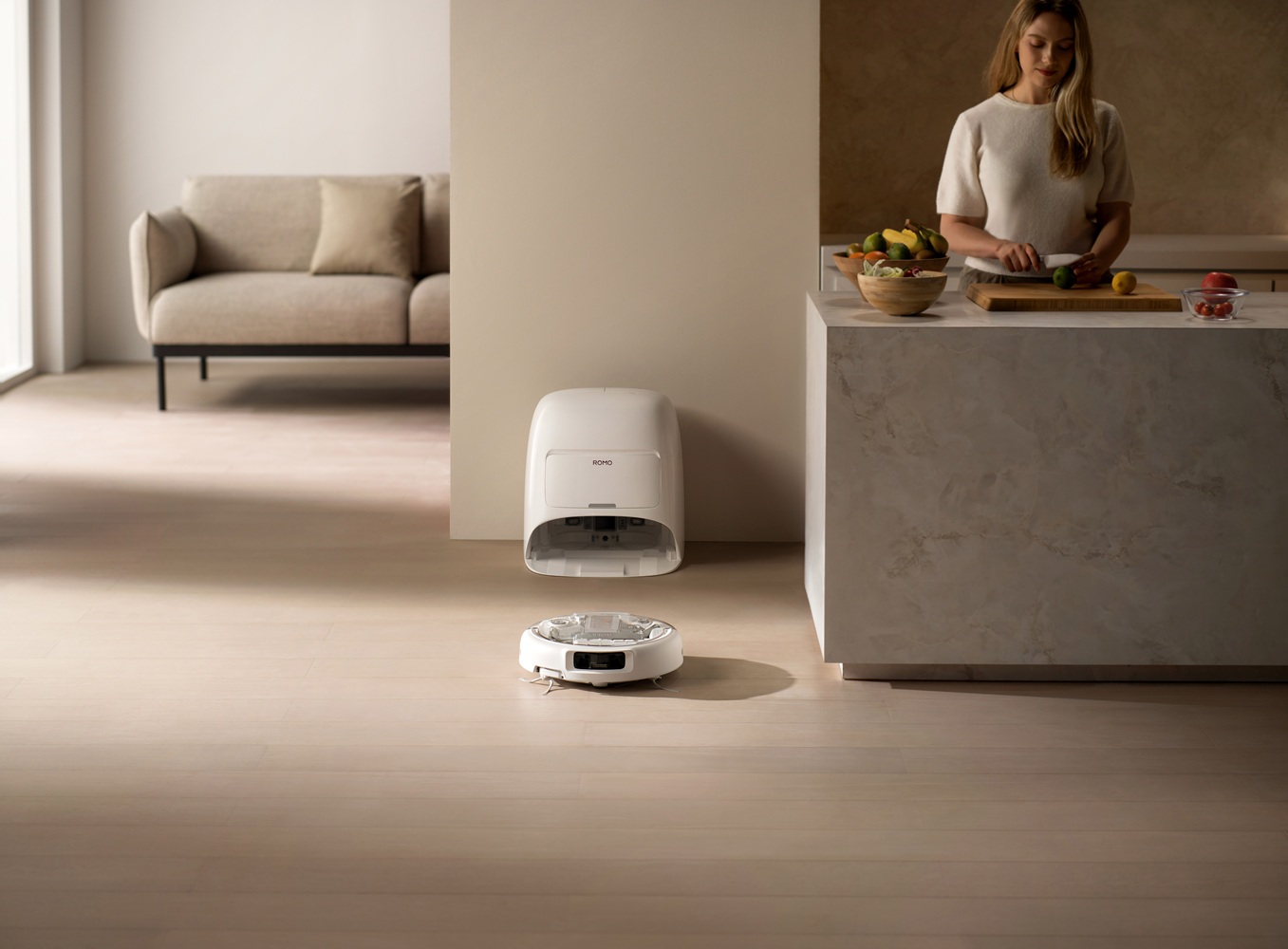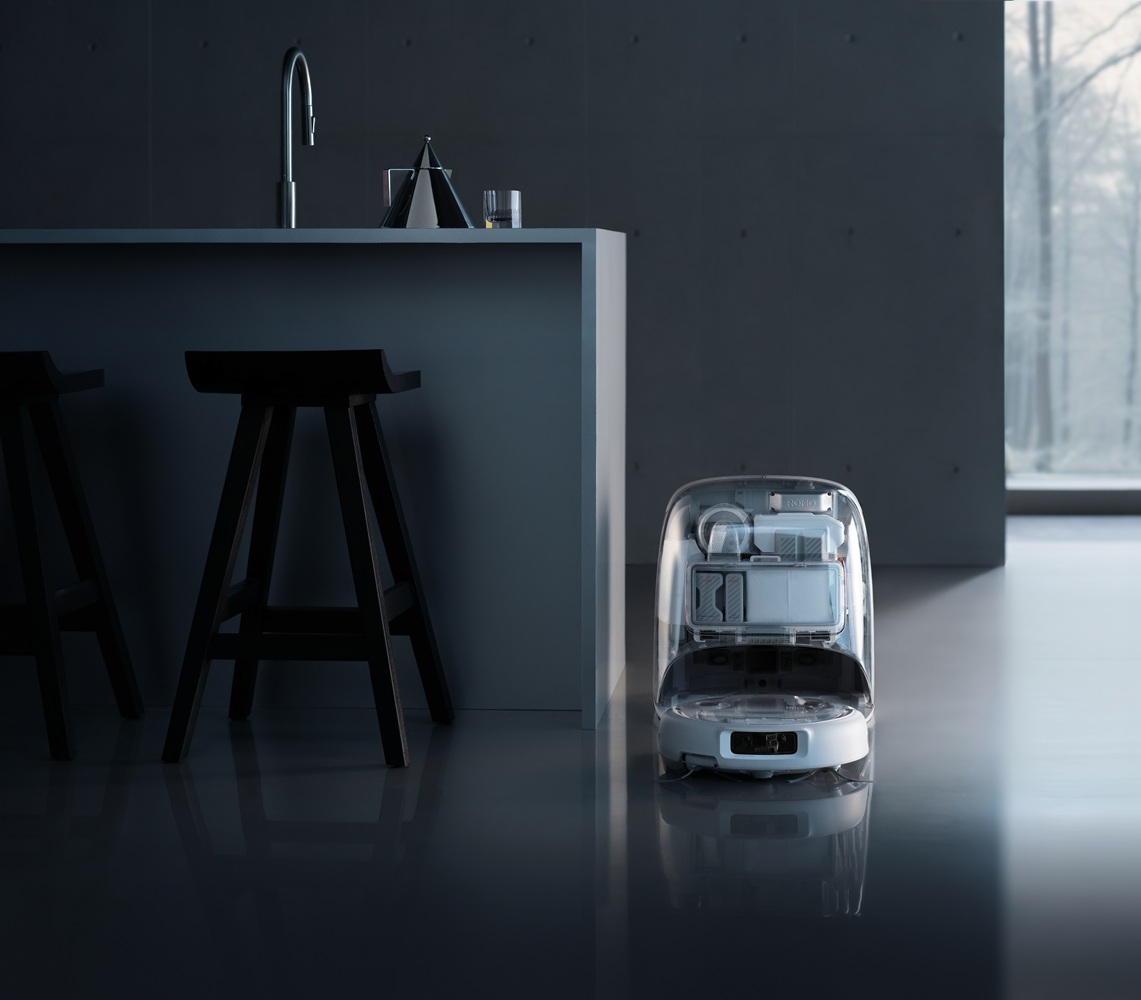- DJI’s new Romo vacuum uses AI-powered vision and decision-making for home cleaning
- The robot uses drone-friendly sensors and real-time route planning to adapt to each room.
- Romo’s high price and limited smart home integration may prevent it from dethroning Roborock globally
DJI, a company known for putting autonomous flying machines in the sky, is now aiming its AI at the clutter in your home. The company’s first line of robot vacuum cleaners, Romo, will officially launch in Europe this week, although these are in select markets for now, with no shared timetable for the UK. And while it’s marketed as a high-spec cleaning device, it also shows how DJI is working to spread AI-powered tools both on the ground and in the sky.
The three Romo models, S, A and P, cost between €1,299 and €1,899 and include features you’d expect from a top-tier robot cleaner, such as a self-emptying base, obstacle detection, mopping and deodorizing capabilities, and almost frightening suction levels. But it’s arguably the intelligence under the hood that defines the Romos, specifically, the type derived from DJI’s years of work in drone navigation.
Romo’s machine learning capabilities allow it to mimic the type of adaptation and planning required to clean a house. The software learns the layout of a house as you move through it, observing with dual fisheye vision sensors and solid-state LiDAR, with the help of edge-aware depth algorithms. That means it can predict collisions in advance and avoid them by recognizing obstacles ranging from uneven furniture and cables to pieces of dog food.

It’s not difficult to connect the dots of DJI’s drone technology with the vacuum cleaner. Making split-second decisions in fast-moving, unstable environments is what autonomous drones have to do all the time. Avoiding a playing card is probably easier than avoiding a small bird moving through the air.
That’s also why other smart vacuum makers are likely keeping an eye on Romo. Most robot vacuums can do basic mapping and obstacle avoidance. Some can even mop or recognize room types. But Romo offers a more complex understanding of the environment and how a house can look different minute to minute.
The vacuum device even changes the rotation of its brush when it detects debris like trash or food, applying more targeted suction while reducing speed to prevent scattering. These behaviors are not codified rules either; They are based on feedback from internal algorithms. And the dual flexible arms extend or retract based on AI-powered interpretation of edge geometry, not just bump detection.
And there’s a hint of the filmmaking that DJI drones are known for in the video feeds from Romo’s onboard sensors. Owners can use them to monitor pets or children remotely, although doing so requires two-factor authentication and uses encrypted transmission for added privacy.
AI Void Battle

Even Romo’s self-cleaning base station works on the premise of minimizing human intervention and can dose the cleaning solution or deodorant depending on the type of room.
However, it may still be an open question whether DJI’s software lives up to its hardware. The DJI Home app is not as well integrated into smart home ecosystems as Apple HomeKit or Alexa Routines. For such an intelligent vacuum, isolation seems like a missed opportunity. Still, you have control over smart routines, cleaning zones, and AI-generated maps, so it’s not missing much on its own.
However, DJI is not likely to threaten Roborock’s throne anytime soon. Romo’s price is high even for electric cleaners and as of now, it is not widely available around the world. It appeals to tech lovers, early adopters and DJI fans, but ordinary consumers may balk at spending €1,899 on something that cleans slightly better than a €799 competitor. For now, these are select markets in Europe, and no plans for a US launch have been shared so far.
However, Romo doesn’t look like a volume play. Rather, it’s a way for DJI to demonstrate that the same fundamental technology used to pilot drones, stabilize cameras, and track athletes can also analyze the floor and decide whether that pile of lint is dust or dog hair.
DJI may be planning a full AI-focused consumer robotics launch, with Romo as evidence. So while Roborock doesn’t need to worry about Romo taking away all of its customers, it needs to keep an eye on the future it’s charting now. Because if there’s one thing DJI technology is good at, it’s navigating a map.
Follow TechRadar on Google News and add us as a preferred source to receive news, reviews and opinions from our experts in your feeds. Be sure to click the Follow button!
And of course you can also follow TechRadar on TikTok for news, reviews, unboxings in video form and receive regular updates from us on WhatsApp also.
You may also like…



